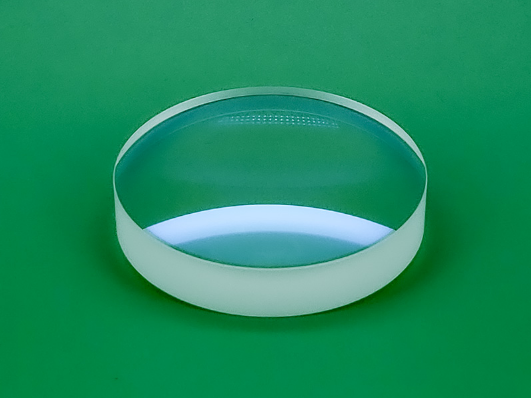Optical Properties and Design Considerations of Plano-Convex Lenses
Jun. 19, 2023
Plano-convex lenses are widely used in various optical systems and applications. Their unique optical properties and design considerations make them a versatile tool in shaping and manipulating light. In this article, we will explore the optical properties and design considerations of plano-convex lenses in detail.
Optical Properties of Plano-Convex Lenses:
1. Focal Length:
The focal length of a plano-convex lens is an essential optical property. It is the distance between the lens and the point where parallel rays of light converge or diverge after passing through the lens. The focal length is determined by the curvature of the lens surfaces and the refractive index of the lens material. In a plano-convex lens, one surface is flat (plano), while the other surface is curved (convex), resulting in a positive focal length.
2. Converging or Diverging Light:
Plano-convex lenses are primarily used for converging or focusing light. When a collimated beam of light passes through a plano-convex lens, it converges to a focal point on the opposite side of the lens. This property is useful in applications such as imaging, focusing, and beam shaping. However, when the light source is placed at the focal point of the lens, the lens can also be used to create a diverging beam.
3. Spherical Aberration:
Plano-convex lenses are prone to spherical aberration, which is an optical aberration that causes rays of light from different parts of the lens to converge or diverge at different focal points. This can result in a blurred or distorted image. Minimizing spherical aberration is crucial in lens design, and various techniques such as using multiple lens elements or aspheric lens surfaces can be employed to correct this aberration.
UV Grade Fused Silica Plano-Convex Lenses
Design Considerations of Plano-Convex Lenses:
1. Lens Material:
The choice of lens material is an important consideration in the design of plano-convex lenses. The refractive index of the material determines the focal length and optical performance of the lens. Common materials used for plano-convex lenses include glass and various optical polymers. The selection of the material depends on factors such as desired optical properties, cost, weight, and environmental considerations.
2. Curvature and Radius of Curvature:
The curvature of the convex surface and the radius of curvature play a crucial role in determining the focal length and optical characteristics of the lens. A larger radius of curvature results in a flatter curvature and a longer focal length, while a smaller radius of curvature produces a more pronounced curvature and a shorter focal length. The design considerations of curvature and radius depend on the specific application requirements.
3. Lens Diameter:
The diameter of a plano-convex lens affects its light-gathering capability and determines the field of view. A larger lens diameter allows for a wider field of view and greater light collection, but it also increases the size, weight, and cost of the lens. The choice of lens diameter should be based on the specific application, balancing the desired optical performance with practical considerations.
4. Lens Thickness:
The thickness of a plano-convex lens affects its optical performance and mechanical stability. Thicker lenses tend to be more rigid but may introduce additional optical aberrations. Thinner lenses are more flexible but can be more prone to distortion. The lens thickness needs to be optimized to achieve the desired optical performance while ensuring structural integrity and compatibility with the overall optical system.
5. Anti-Reflective Coatings:
Plano-convex lenses can suffer from reflections and loss of light due to the difference in refractive indices between the lens material and the surrounding medium. Anti-reflective (AR) coatings can be applied to the lens surfaces to minimize reflection losses and increase transmission efficiency. These coatings are designed to reduce reflections at specific wavelengths and improve overall optical performance.
6. Mounting and Alignment:
Proper mounting and alignment of plano-convex lenses are critical for optimal optical performance. Mounting techniques such as lens holders, adhesives, or mechanical fixtures should be chosen based on the specific requirements of the application. Precise alignment ensures that the lens is positioned correctly within the optical system, minimizing misalignment-induced aberrations and maximizing performance.
Conclusion
Understanding the optical properties and design considerations of plano-convex lenses is essential for their effective utilization in various optical applications. By considering factors such as focal length, spherical aberration, lens material, curvature, diameter, thickness, coatings, and mounting, designers can optimize the performance and efficiency of plano-convex lenses in their optical systems.




















